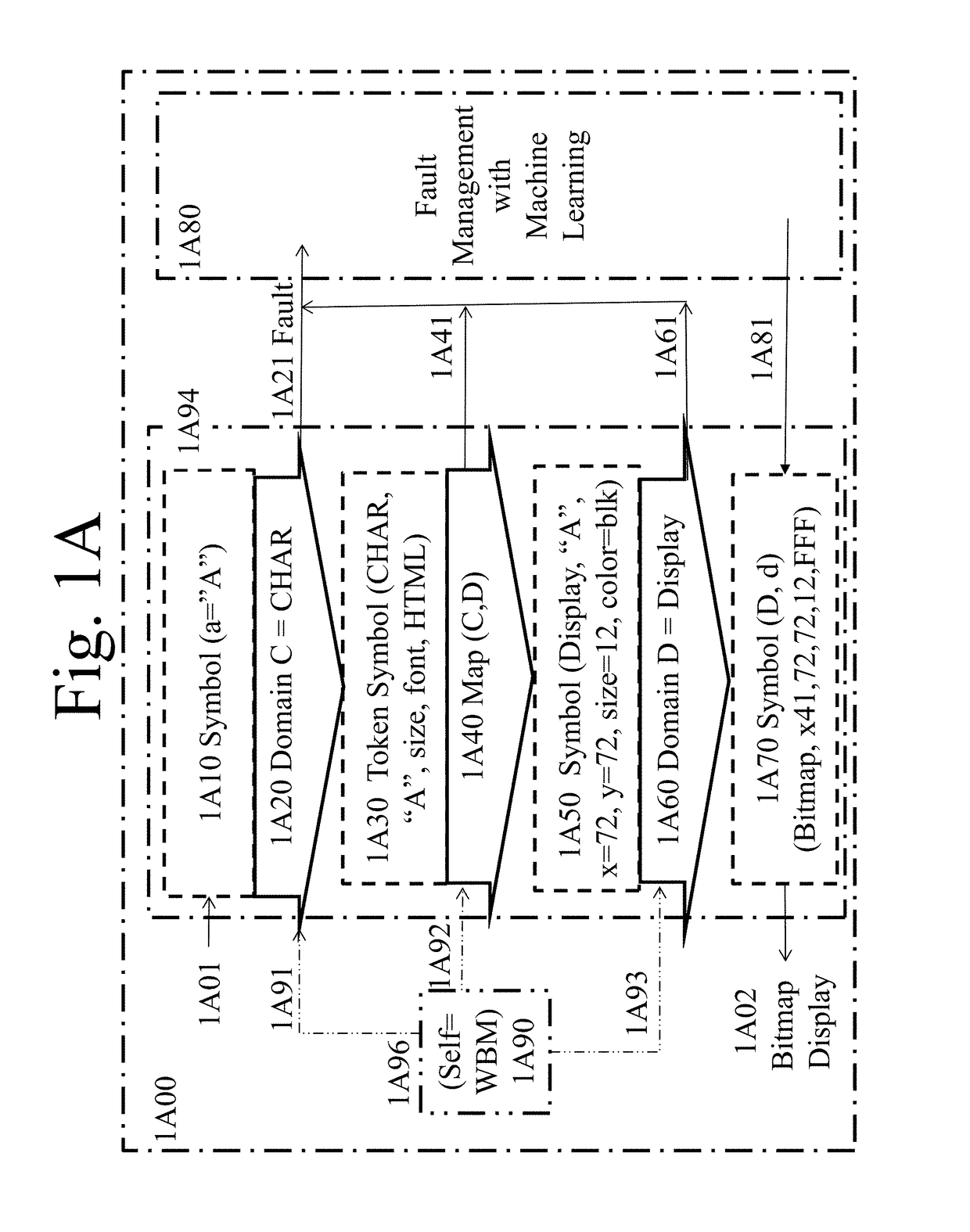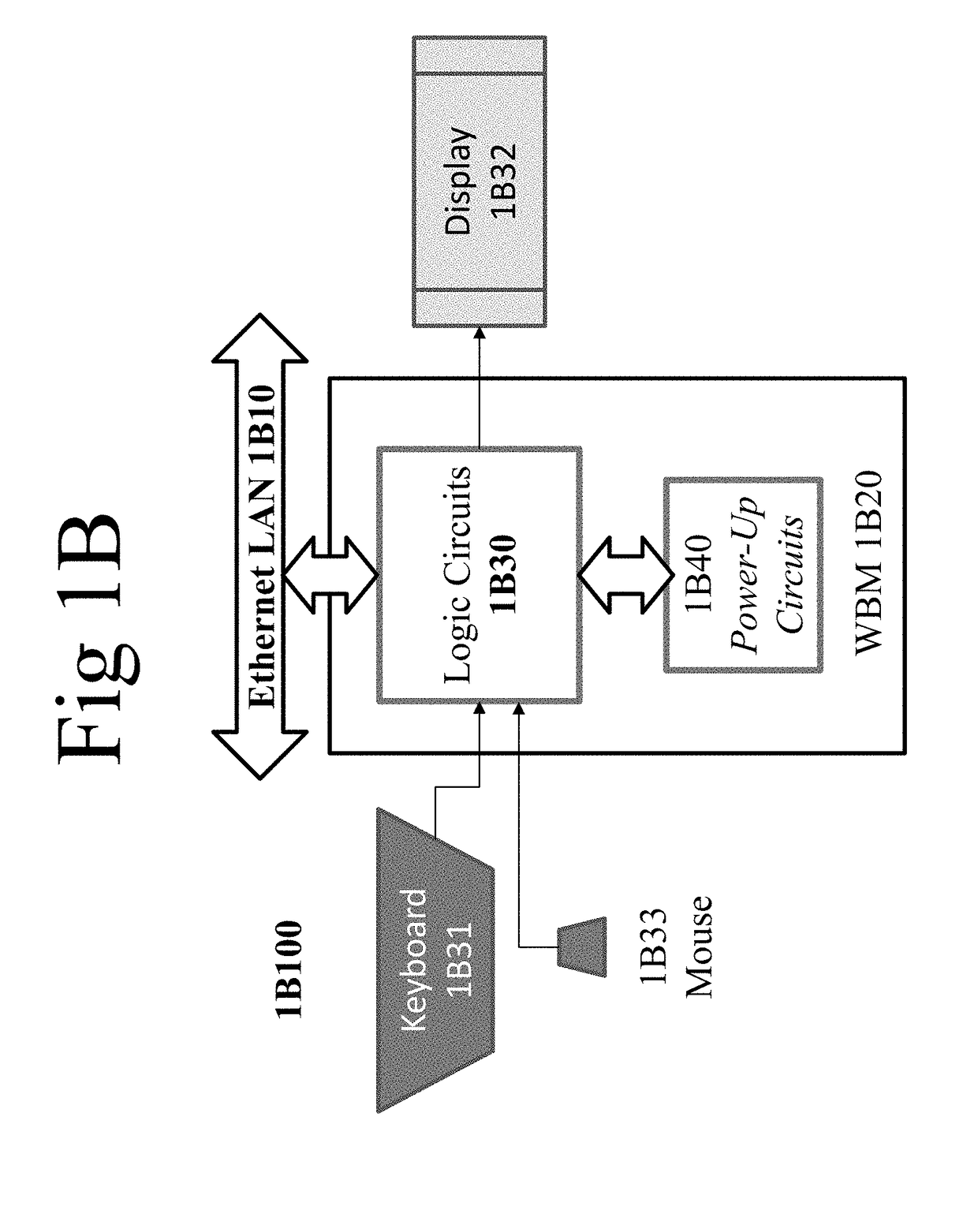Domain-Specific Hardwired Web Browser Machine
a web browser machine and domain technology, applied in computing, instruments, electric digital data processing, etc., can solve the problems of limited usage, large domains, finite usage, etc., and achieve the effect of improving cybersecurity
- Summary
- Abstract
- Description
- Claims
- Application Information
AI Technical Summary
Benefits of technology
Problems solved by technology
Method used
Image
Examples
Embodiment Construction
Introduction to Terminology
[0042]As discussed above in the brief summary, information processing functions of a WBM may be hardwired into the pipes of ASICs, optical computing circuits, FPGAs, and other circuits or computing devices that may comprise a machine. Information of a WBM is stored and processed through the circuitry of a WBM in various forms. Such information forms may include: symbols, objects, tokens, domains, and a self-description, which is referred herein as “(Self)”.
[0043]A symbol is textual data, the basic unit of information representation that conforms to a defined logical structure and is expected to be a member of a domain. For example, a symbol could be text such as “Account Number”; a symbol could be “IP Address 1.2.3.4.5”; a symbol could be “flagUSA.jpeg:[image data]”, wherein [image data] is the actual image data for flagUSA.jpeg. A WBM may express a symbol as a value of an object. Values of objects may be fixed and constant, that of a single symbol hardwir...
PUM
 Login to View More
Login to View More Abstract
Description
Claims
Application Information
 Login to View More
Login to View More - R&D
- Intellectual Property
- Life Sciences
- Materials
- Tech Scout
- Unparalleled Data Quality
- Higher Quality Content
- 60% Fewer Hallucinations
Browse by: Latest US Patents, China's latest patents, Technical Efficacy Thesaurus, Application Domain, Technology Topic, Popular Technical Reports.
© 2025 PatSnap. All rights reserved.Legal|Privacy policy|Modern Slavery Act Transparency Statement|Sitemap|About US| Contact US: help@patsnap.com



